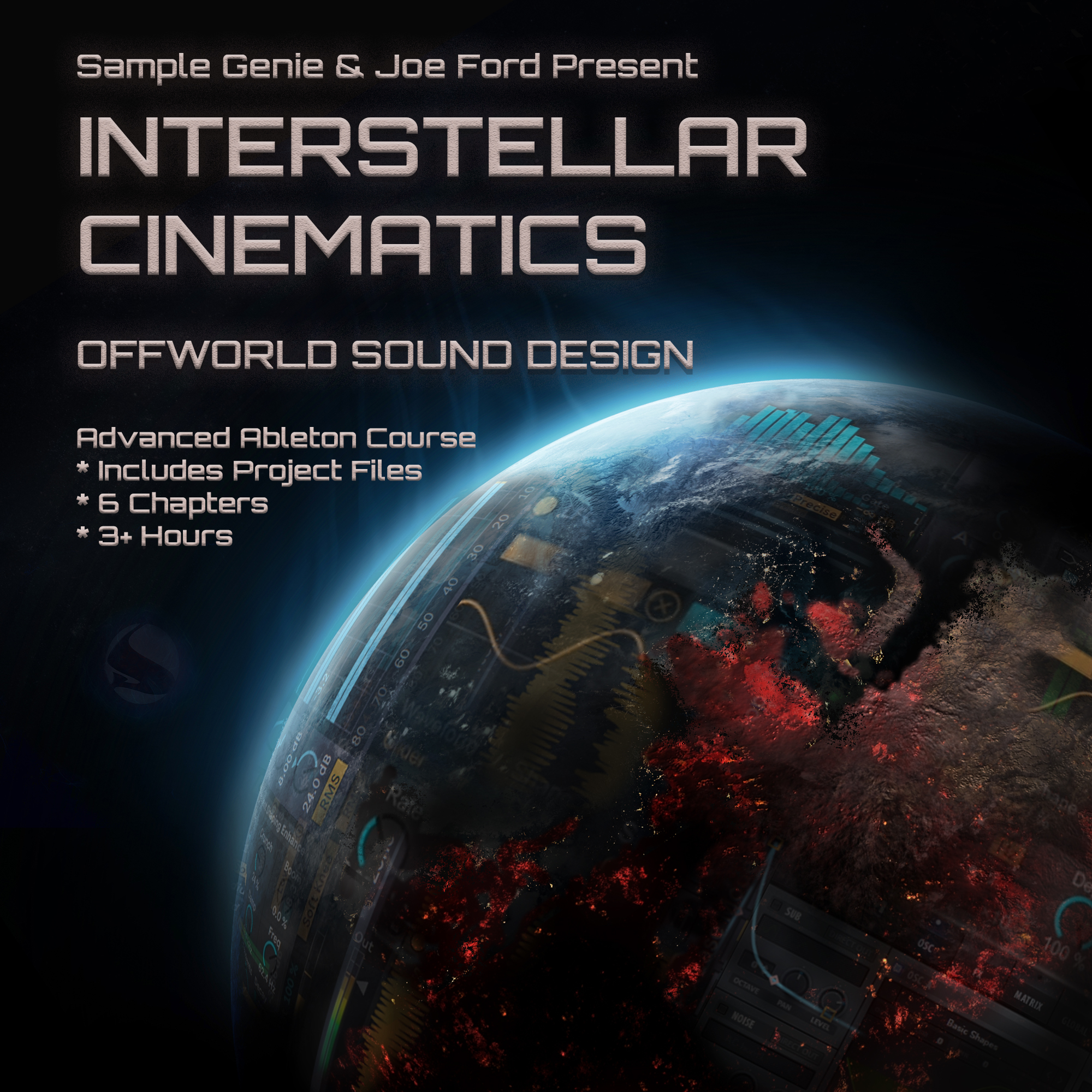Analysis of S5E10: Lenzman – "Tender Love" Track Walkthrough
- This topic has 0 replies, 1 voice, and was last updated 6 years, 3 months ago by ,
 Harry.
Harry.
-
AuthorPosts
-
-
2018-04-10 at 17:14:06 #41608,
 HarryModerator
HarryModeratorTopics: arrangement, bass, bass layering, drums, drum layering, drum programming, Reason, vocals
Lenzman’s second Sample Genie video, looking at his track “Tender Love”, which features vocals from Steo. This might be the first Sample Genie tutorial that features a track with original vocals? For the video Lenzman looks at track elements, why particular hits were used, how drums are arranged, edits, layering, and production tricks he uses. Self described as not the most technical producer, he wants to use this track to demonstrate how good ideas can help with producing music.
01:55 – showing how his mixer is set up in Reason
– A main mixer, with five other mixers feeding in to it, acting more like busses. Also has a compressor and maximizer on the mixer’s output.
– Beats 1 & 2 mixers. These are the drums, number of mixers he uses for beats varies from project to project.
– Bass mixer.
– Music mixer.
– Vocal mixer.03:10 – aim for beats was tight, crisp beats that retained an organic feel
– Using individual drum hits to create the tight & crisp beat, then combined with breakbeats.
– Punchy kick with a low frequency boost, feels it gives the kick warmth
– Claps & snaps to give the drums some character
– Does like quantizing individual hits, but loose feel can come from loose slicing of hits, or from the layered breakbeats08:20 – breaks in the track have short, tight slices, some low volume break layers as well, adding some shuffle to the drums
10:00 – looking at the structure of the drum arrangement
11:20 – wanted to keep drums delicate, no crazy edits, because “Tender Love” is a vocal track
– Doing crazy stuff with drums can distract from the groove11:45 – looking at musical elements
– Chords from another project, made a hook from that session
– Does not keep notes all the same length
– Varied lengths can add to feeling
– Used a stock Reason grand piano preset
– Layered with a Rhodes piano preset16:00 – using volume fades, filter automation to bring sounds in
17:50 – other musical elements, probably added after vocals, to fill in frequency gaps
– Muted guitar with some distortion and delay
– Extra piano sample
– 1980s-sounding pad
– High key strings
– As one sound fades out, another fades in
– Some sounds triggered whenever kicks are triggered, giving illusion of side chaining
– Layered stabs27:30 – looking at bass
– Describes as laidback, follows the main piano29:20 – sub bass made from a basic Maelstrom patch, with some distortion
– Uses spectral analyzer and a SubPac
– Looks at his track “Fade Away” as an example of longer, droney bass
– Lately prefers faster bass with shorter hits31:30 – doubling up bass hits to create occasional wobbling hits, almost sounds like an LFO is applied, but it’s the two notes phase canceling each other at certain points
– This is used sparingly
– Square pass patch for a mid layer
– Garage bass preset with low end filtered out
– All of these bass layers to add color to the overall bass tone of the track34:50 – likes to drop out the bass at the start of sections, as an edit
35:20 – looking at the vocals, sung by Steo
– Important not to have too much going on musically when at the point of recording vocals, can distract from the vocal
– Be flexible, may need to change the music to fit the vocal
– Panned vocal slightly left and right on two mixer channels39:10 – offsetting vocals slightly to create dynamic sound
– Works sometimes39:45 – switched to Ableton Live for vocal work, bounce of the track from Reason, and then additional tracks in Live for the vocal parts
42:50 – layers of the vocals
43:35 – getting balance of the chorus right
45:05 – using reverb to blend vocal layers
49:45 – bounces & brings vocal track back in to Reason
50:20 – explains how he likes to structure the track elements
– Having structure helps him keep tunes organized, helps with writing, and helps for later in a track when trying to fine tune or make small edits
– The need for changes every 16 bars, but having them happen organically
– Themes to sections (section A, B, C, etc.)
– Finding what works for you as an individual, what works for your approach & workflow—
THOUGHTS & QUESTIONS
– The part about bass around 29:20 mark, made me think of an article about common bassline styles (link: https://www.attackmagazine.com/technique/tutorials/low-end-theory-exploring-eight-common-bassline-styles/). I’ve wondered about these myself, from “reece” basses being dnb’s usual term for a drone bass, 808 style basses being more of a punchy bass, and then a typical neuro bass being a modulated bass (link: https://www.attackmagazine.com/technique/tutorials/low-end-theory-exploring-eight-common-bassline-styles/7/), or even a multi-patch bass (link: https://www.attackmagazine.com/technique/tutorials/low-end-theory-exploring-eight-common-bassline-styles/8/). Do liquid style dnb tracks lend themselves more to drones and/or punchy bass? What are some good ways to explain what type of bass you are trying to use in any given project? What kinds of sounds layer well for a bass?– It would be interesting to get Steo’s perspective on the track, and how he contributed.
"Knowledge kept is knowledge lost." - Bobbito Garcia
-
-
AuthorPosts
- You must be logged in to reply to this topic.


